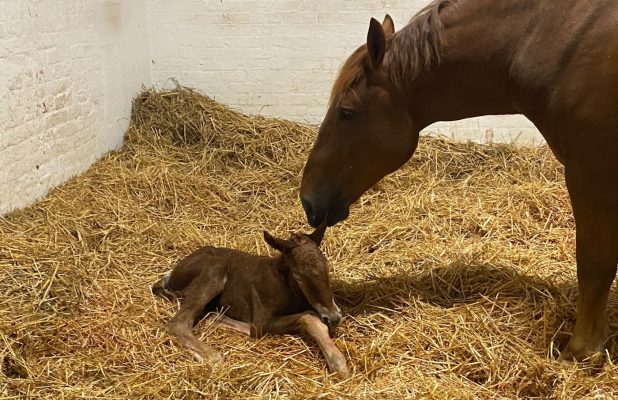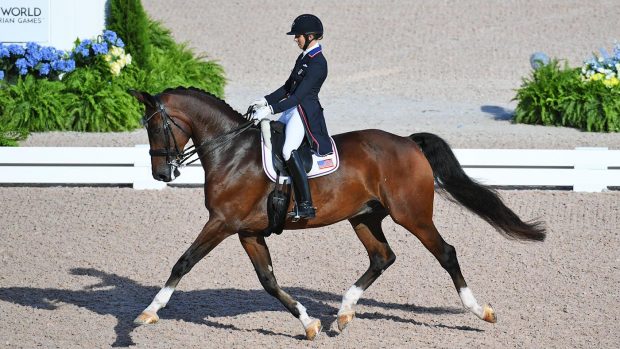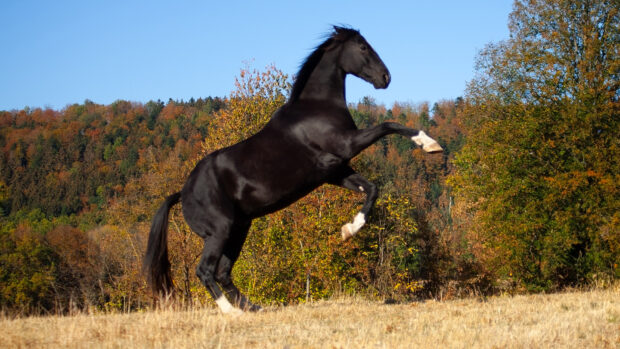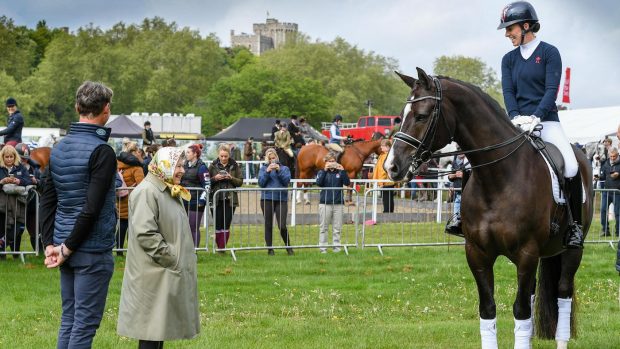A healthy Suffolk horse filly has been born thanks to the innovative use of sexed semen to determine her gender.
In the first time the technique has been used to support a rare breed’s survival, the as yet unnamed foal was born to Ruby, owned by Nottingham Trent University, by Mike Clarke’s stallion Holbeach Iggy. Sire and dam were selected based on their genetics as part of a project between The Rare Breed Survival Trust (RBST) and Nottingham Trent University, which “uses pedigree information to enable the breeding of small populations in a way that minimises the risk of inbreeding and genetic decline”.
It was Tullis Matson, owner and managing director of Stallion AI Services and supporter of the RBST, who saw the sexed semen technique as a way to support Britain’s endangered equine breeds.
“To be able to use our reproduction expertise in this way, to help preserve an irreplaceable part of our magnificent heavy horse heritage is something we have been working towards for many years,” he said.
“The challenges have been great and many but watching the birth of this beautiful, healthy filly foal was a truly magical experience.”
The sex-sorting project, carried out in with leading bovine semen sexing companies Cogent and Sexing Technologies, uses specialist equipment to sort the semen before insemination.

RBST chief executive Christopher Price said: “This is tremendous news for anyone concerned with the conservation of our native equines. The most effective way of increasing the population size of this very rare breed is by increasing the number of fillies born.
“The project demonstrates the viability of using new techniques for selecting female foals in order to increase the breeding population much more rapidly than could be achieved through relying on traditional methods. We hope it will prove to be a model for more projects in future.”
There are fewer than 72 female Suffolks in the UK, fewer than 300 in the world, so every mare is crucial to the breed’s future.
Continues below…

Subscribe to Horse & Hound magazine today – and enjoy unlimited website access all year round
Ruby was inseminated in June last year, but was found not to be in foal. The second attempt, in August, was successful.
Gareth Starbuck, head of animal and equine sciences at Nottingham Trent University, said: “The birth of this foal marks a major step towards securing the future of the Suffolk horse and all other rare animal breeds. We are overjoyed that the 11-month wait has resulted in success and I want to thank everyone who has played a part in it.
“It has been a pleasure to work with the RBST to further develop the process of mare and stallion matching amongst rare breeds.”
Tullis added: “The project required significant financial support and we were incredibly fortunate that all involved parties donated both time and resources and we received substantial financial backing from both the Suffolk Horse Society and the RBST, without which we would have been unable to continue.
“Eleven months on we are delighted to announce the birth of a healthy filly Suffolk foal, whose birth is a beacon of hope not just for the Suffolk horse, but for all critically endangered breeds currently nearing extinction.”
We continue to publish Horse & Hound magazine weekly during the coronavirus pandemic, as well as keeping horseandhound.co.uk up to date with all the breaking news, features and more. Click here for info about magazine subscriptions (six issues for £6) and access to our premium H&H Plus content online.




